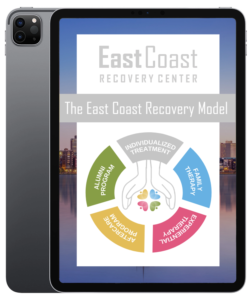If you want to know why snorting Vicodin isn’t worth the high, this article is for you. Prescription opioids used to be heavily overprescribed, and it was too easy to get them from friends or family members or ask one or multiple doctors for prescriptions. When you’re not taking Vicodin for prescribed reasons, it can be enticing to try new methods to get “high,” including snorting, smoking, and injections.
This short article breaks down the risks and outcomes of snorting Vicodin. It emphasizes how choosing this method for a quicker high can speed up the development of opioid use disorders compared to those who stick to the prescribed dose and method of administration.

What Is Vicodin?
Vicodin is the discontinued brand name for hydrocodone and acetaminophen and was commonly prescribed to individuals with moderate to moderately severe pain, usually after surgery to remove third molars (wisdom teeth).* Despite the brand name’s discontinuation and change from a Schedule III narcotic to Schedule II, hydrocodone accounts for almost 60% of all painkiller prescriptions in the U.S. Another study found that 99% of all hydrocodone in the world is in the U.S.
Vicodin includes relaxation and euphoric effects by binding to the opioid receptors in the brain, which control the amount of pain signals the body sends to the brain. Studies indicate that hydrocodone is more effective than codeine and is nearly as strong as morphine. This surge of dopamine interacts with the brain’s reward system, pushing individuals to take or abuse Vicodin whenever they feel physical or mental pain.
*Approximately 3.5 million young adults in the U.S. have their third molars removed, and this can be the first time they ever experience the effects of opioid prescriptions, which can potentially entice them to save their medication or try to receive more in the future. However, hydrocodone is a Schedule II narcotic prohibited from being refilled at a pharmacy, possibly leading young adults to find alternative sources of illicit opioids.
Read more: Hydrocodone Vs. Codeine: Painkillers Or Addiction Gateways?
Most Common Ways To Take Vicodin
Vicodin (hydrocodone) is mainly dispensed in extended-released and long-acting capsules and tablets to be taken orally. Vicodin is dissolved in the stomach, adsorbed by the intestines, and processed by the liver before it reaches the brain. The most common dosage guide recommends patients take the capsules every 12 hours and tablets every 24 hours at the same time(s) each day. When it comes to abusing medication, there are several ways people bypass the slower, orally ingested onset of time 30 minutes to one hour. These methods include:
- Snorting: Some people crush hydrocodone into a fine powder with a spoon or hard surface and use a straw, rolled-up dollar bill, or just their nose to snort it. This bypasses the slower onset time and reaches the brain through the sinus passages supplied by the internal maxillary and ophthalmic arteries.
- Smoking: Some individuals use a glass pipe or aluminum foil to heat and smoke painkillers. This again bypasses the liver and stomach and enters the bloodstream much faster.
- Injection: Some users will dissolve opioids into water or other soluble solutions and inject them directly into their bloodstream, sometimes in their hands, arms, ankles, and feet.

What Are The Effects Of Snorting Vicodin?
The desired effects of snorting Vicodin include a short-lived but intense high, similar to snorting cocaine (even though cocaine is a stimulant). Hydrocodone reaches the bloodstream through mucous membranes and blood vessels in the nose, throat, and roof of the mouth. However, the tissue inside the nasal passage is thin, delicate, and easily irritated by powder, dust, and other chemicals. This can lead to constant discomfort, runny nose, and nosebleeds.
Eventually, snorting Vicodin will erode the nasal tissue and eat away at the septum and roof of the mouth, leaving behind holds that make it difficult to breathe and eat and can even create whistling sounds when breathing. One study found that 77% of people who snort Vicodin or other hydrocodone medications developed active necrosis (when the tissues inside the nose die). This can emit a dead aroma from their nose.
Snorting Vicodin can also cause facial pain and swelling and make swallowing difficult. Additionally, traces of Vicodin can drip down into the throat and irritate the vocal cords, lungs, and respiratory system. If someone crushes Vicodin on an unclean surface, they risk infections since hydrocodone can weaken the immune system.
How Does Snorting Vicodin Lead To Addiction Quicker?
Someone snorting Vicodin has the potential to develop an opioid use disorder quicker than others who abuse the drug since it reaches the brain faster and produces an immediate reward/pain relief effect. Whenever someone is depressed, feeling anxious, or stressed, they mentally know if they take a “bump” of Vicodin, their negative feelings will go away.
Because the effects of snorting Vicodin don’t last very long, and users can take more and more each time the effects fade away. Consistent Vicodin abuse can build a tolerance in an individual and require them to take more of the substance to feel the same effect. Someone snorting 7.5mg of Vicodin (the standard adult dosage) will need to increase their amount more and more. This increases the chance of experiencing severe side effects and overdose.
Another risk of abusing Vicodin is turning to more potent and accessible opioids like heroin. One study found that people who abuse medication opioids switch to heroin or fentanyl as they develop a tolerance to feel high again. Prescription opioids like Vicodin are also harder to come by, and many doctors are aware of its abuse and addiction risks. They will turn away users who seem suspicious or intend to abuse it. Heroin is also cheaper than prescription opioids when sold illegally. However, online prescription websites list Vicodin prescriptions as cheap as $15 for 5mg doses.

Dangers Of Vicodin Addiction
Snorting and abusing Vicodin increases the likelihood of extreme side effects and addiction. Side effects of Vicodin abuse include increased anxiety, constipation, headaches, slowed breathing (respiratory depression), stomach pain, nausea, loss of appetite, and even loss of consciousness. The acetaminophen inside Vicodin can also cause liver toxicity, damage, and failure.
If an opioid use disorder develops, quitting suddenly or not receiving enough of the drug in time can lead to withdrawal symptoms. This is why most people abusing Vicodin are constantly seeking out more and need to ensure they have enough leftovers once the effects fade, contributing to the illicit drug industry. Withdrawal symptoms include anxiety, agitation, insomnia, vomiting, and muscle pain.
Read more: How Long Does It Take To Break An Addiction?
Opioid Addiction Treatment In Boston, MA
If you or someone you know is snorting Vicodin, contact East Coast Recovery Center in Boston, MA. Our addiction treatment center is dedicated to fighting the opioid crisis surging throughout Boston and the surrounding area. If you want a place where you can overcome opioid addiction while finding true meaning in life, call today.
Our addiction treatment center doesn’t just offer therapy and counseling sessions. We take our clients on excursions to the beach, amusement parks, axe throwing, movies, and more. We want our clients to feel comforted and supported during this challenging but important time.











